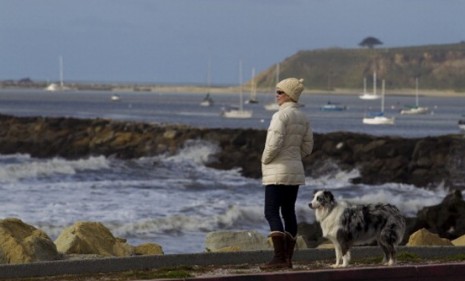Japan's quake: Why California is next
Massive earthquakes sometimes trigger temblors across oceans, says Simon Winchester in Newsweek. And science suggests that, after Japan, the Big One could be coming to California

"Mankind inhabits this Earth subject to geological consent," says Simon Winchester in Newsweek. And, as demonstrated by the earthquake and resulting tsunami that brought Japan to its knees, this consent "can be withdrawn at any time." Japan sits "at the junction of a web of tectonic-plate boundaries that make it more peculiarly vulnerable to ground-shaking episodes than almost anywhere else." But the disaster there can't be viewed in isolation. When one side of a tectonic plate shifts, "the Earth becomes like a great brass bell, which when struck by an enormous hammer blow on one side sets to vibrating and ringing from all over." This can trigger catastrophe on faraway edges of the same great plate, which could be bad news for California. Here, an excerpt:
There was a horrifically destructive Pacific earthquake in New Zealand on Feb. 22, and an even more violent magnitude-8.8 event in Chile almost exactly a year before. All three phenomena involved more or less the same family of circum-Pacific fault lines and plate boundaries.... Now there have been catastrophic events at three corners of the Pacific Plate — one in the Northwest, on Friday; one in the Southwest, last month; one in the Southeast, last year.
That leaves just one corner unaffected — the Northeast. And the fault line in the northeast of the Pacific Plate is the San Andreas Fault, underpinning the city of San Francisco. ...
The Week
Escape your echo chamber. Get the facts behind the news, plus analysis from multiple perspectives.

Sign up for The Week's Free Newsletters
From our morning news briefing to a weekly Good News Newsletter, get the best of The Week delivered directly to your inbox.
From our morning news briefing to a weekly Good News Newsletter, get the best of The Week delivered directly to your inbox.
All know that the San Andreas Fault is due to rupture one day — it last did so in 1906, and strains have built beneath it to a barely tolerable level. To rupture again, with unimaginable consequences for the millions who live above it, some triggering event has to occur. Now three events have occurred that might all be regarded as triggering events. There are in consequence a lot of thoughtful people in the American West who are very nervous indeed — wondering, as they often must do, whether the consent that permits them to inhabit so pleasant a place might be about to be withdrawn, sooner than they have supposed.
Read the full article at Newsweek.
A free daily email with the biggest news stories of the day – and the best features from TheWeek.com


